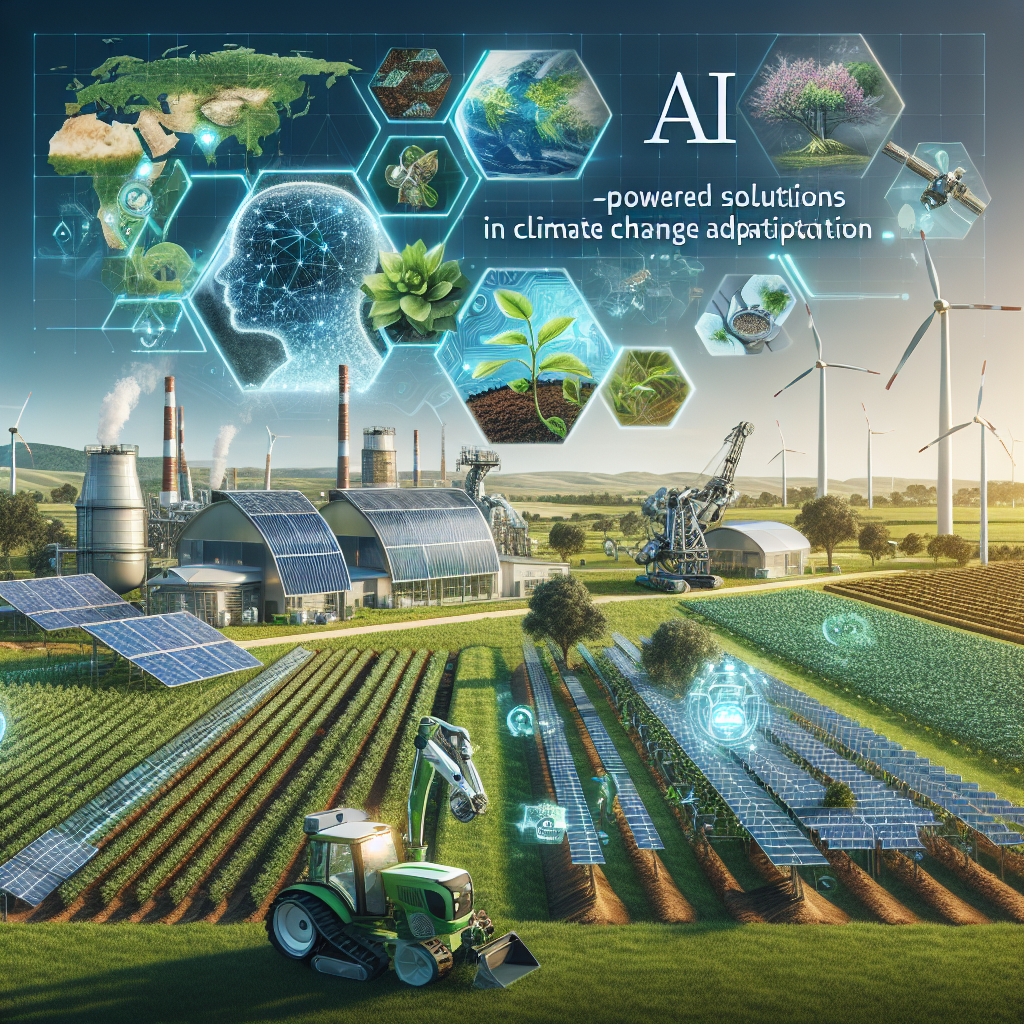Climate change is one of the most pressing issues facing our planet today, with far-reaching implications for agriculture and food security. Rising temperatures, changing precipitation patterns, and increased frequency of extreme weather events are all impacting agricultural production and threatening the livelihoods of millions of farmers around the world. In order to adapt to these changing conditions and ensure a sustainable future for agriculture, innovative solutions are needed. Artificial intelligence (AI) is emerging as a powerful tool in the fight against climate change, offering new ways to monitor and manage agricultural systems in a more efficient and sustainable manner.
AI-powered solutions for climate change adaptation in agriculture encompass a wide range of technologies and approaches, from predictive modeling and data analytics to precision agriculture and automated decision-making systems. These technologies have the potential to revolutionize the way we approach farming, making it more resilient to the challenges posed by climate change and helping to ensure food security for a growing global population.
One of the key advantages of AI-powered solutions is their ability to process and analyze large amounts of data in real-time, allowing farmers to make more informed decisions about how to manage their crops and resources. For example, AI algorithms can be used to analyze satellite imagery and weather data to predict crop yields and identify areas at risk of drought or other environmental stressors. This information can then be used to optimize irrigation schedules, adjust fertilizer applications, and take other proactive measures to protect crops and maximize yields.
Another area where AI is making a big impact is in the development of precision agriculture techniques. Precision agriculture involves using technology to monitor and manage agricultural practices at a very fine scale, allowing farmers to tailor their actions to the specific needs of their crops and soils. AI-powered sensors and drones can be used to collect data on soil moisture, nutrient levels, and plant health, providing farmers with a detailed picture of their fields and enabling them to make targeted interventions to optimize production. This can help to reduce water and chemical use, minimize waste, and increase overall efficiency in agricultural systems.
AI can also be used to develop more resilient crop varieties that are better able to withstand the challenges of climate change. By analyzing genetic data and using machine learning algorithms, researchers can identify genes that confer resistance to drought, heat, pests, and other stressors, and use this information to breed new varieties that are more resilient and productive. This can help to ensure that farmers have access to crops that can thrive in a changing climate, reducing the risk of crop failures and food shortages.
In addition to these direct applications in agriculture, AI can also be used to support decision-making at a policy level, helping governments and organizations to develop more effective strategies for climate change adaptation. By analyzing data on climate trends, crop yields, and other relevant factors, AI algorithms can help to identify areas that are most at risk from climate change and prioritize interventions to support vulnerable communities. This can help to ensure that resources are allocated where they are most needed, and that adaptation measures are targeted and effective.
Overall, AI-powered solutions have the potential to revolutionize the way we approach climate change adaptation in agriculture, offering new tools and techniques to help farmers and policymakers respond to the challenges of a changing climate. By harnessing the power of AI, we can develop more resilient agricultural systems that are better able to withstand the impacts of climate change and ensure food security for future generations.
FAQs:
Q: How is AI being used to monitor and manage crop diseases in agriculture?
A: AI algorithms can analyze data from sensors and satellite imagery to detect signs of crop diseases at an early stage, allowing farmers to take proactive measures to prevent their spread. This can help to reduce the use of chemical pesticides and protect crop yields.
Q: Can AI help farmers adapt to changing weather patterns and climate conditions?
A: Yes, AI algorithms can analyze weather data and predict future climate trends, helping farmers to plan their planting and harvesting schedules accordingly. This can help to reduce the risk of crop losses due to extreme weather events such as droughts or floods.
Q: What are the potential drawbacks of using AI in agriculture?
A: One potential drawback is the cost of implementing AI technologies, which may be prohibitive for small-scale farmers. There are also concerns about data privacy and security, as AI systems rely on large amounts of data that need to be carefully managed to protect sensitive information.
Q: How can farmers access AI-powered solutions for climate change adaptation?
A: There are a growing number of companies and organizations that offer AI-powered solutions for agriculture, ranging from software platforms to sensor technologies. Many of these tools are accessible to farmers through subscription services or partnerships with agricultural organizations.
Q: What role can governments play in supporting the adoption of AI in agriculture?
A: Governments can play a key role in supporting the adoption of AI technologies in agriculture by providing funding and incentives for research and development, as well as by creating policies and regulations to ensure the responsible use of AI in farming. This can help to accelerate the adoption of AI-powered solutions and support the transition to more sustainable agricultural practices.

